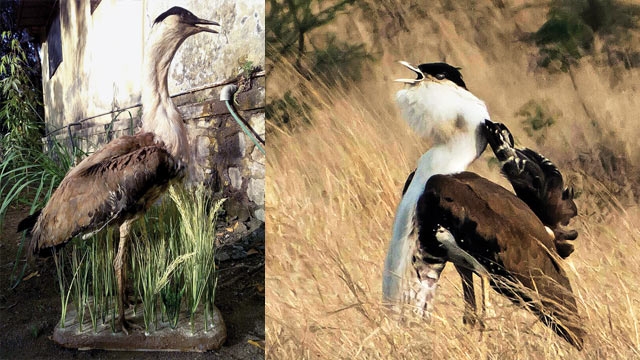
The country's only taxidermist, Mumbai-based Dr Santosh Gaikwad, has played a crucial role in giving a new lease of 'life' to one of India's most loved and photographed birds — Alpha, the Great Indian Bustard (GIB) that died in September last year.
Taxidermy is an art that involves stuffing an animal body to preserve it for display and educational purposes by making it seem life-like.
Alpha, who was also popularly known as 'Vicky Donor', was from Nanaj Wildlife Sanctuary (NWS) in Solapur. It's role was extremely important as it was one of only two males at NWS, which is home to the critically-endangered GIBs in Maharashtra. Forest officials were sure that the bird could attract females to procreate, thus helping increase the numbers of GIBs in Maharashtra, which has only five or six of these at present, of which two are at NWS. But, Alpha was found dead in a small village, Karamba, outside the sanctuary's premises.
Dr Gaikwad said: "It (the process of taxidermy) was an extremely challenging task, since when forest department officials brought Alpha to me post his death, almost 50 to 60 of his big feathers were found to have been separated. Also while carrying out the taxidermy of birds, one has to be extremely careful since the skin is as thin as only a few pages of a newspaper stacked together. This makes the art of dissection a severe test since if even a small mistake is made, all the feathers would come out and the final model would look ugly."
Since Gaikwad — who runs the Wildlife Taxidermy Centre at Sanjay Gandhi National Park — was also busy with other projects, Alpha's taxidermy was kept on hold. But now, after a three-week process, the GIB is ready, standing four feet tall.
The skinned bird's skeleton was used to create a mold and after a process of tanning, the skin was fixed to the mold and stitched along with neatly-arranged feathers just like the ones on the live bird. The finishing touches involved giving it glass eyes and a platform with grass to stand on.
"This was the first time that I got to properly create a GIB model since before this I had created a model for a small female, but it could not be given the best shape as it was brought to me in a very poor condition," Gaikwad said.
"Alpha was the pride of NWS for almost a decade, adored even by tourists, and was the most photographed GIB. Hence, we have decided to preserve it in the GIB interpretation centre at Nanaj," said chief conservator of forest Sunil Limaye, who is the in-charge of NWS.
About Great Indian Bustard
GIB is listed under Schedule I of the Indian Wildlife (Protection) Act, 1972 and is also listed as a critically-endangered species by the IUCN since the population of this bird has reduced to below 150 across India. It's found in dry bushy grasslands and the GIB can be distinguished by the black crown on its forehead, contrasting with a pale neck and head. They breed mostly during the monsoon season. Males have a gular pouch right below the tongue, which helps produce a resonant booming mating call to attract females and can be heard up to a distance of 500 metres.
http://www.dnaindia.com/india/report-taxidermy-model-created-for-popular-great-indian-bustard-alpha-2200550